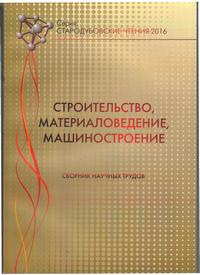Psychophysiological characterstics of safety operators in variations the parameters of light environment
Keywords:
occupational health and safety, physiological factors of work process, parameters of light environment, illumination level, effectiveness of operator's activitiesAbstract
Purpose. The study of safety level on modern industries demonstrated that often the organizational and psychological factors (fatigue, poor mental state, a low level of training in security issues) are the cause of emergency situations and injuries. The light environment conditions are an important factor that influences the efficiency of operator's activities and allows you to receive an object of management information. To determine the safety of the system «man - technology – environment» is necessary to study the impact of psycho-physiological factors the work process and working environment of operators when the light environment parameters are changed. Methodology. For research the engineering-psychological method was used. The proposed method is based on determinations the integral characteristics of human perception. To obtain reliable results, we have formulated the criteria for selection and inspection of operators. The parameters and the range of variation the light environment conditions were also declared and justified. Findings. The dependence of changes in the functional status of employees on the criteria of «perception - attention -focus – thinking» has been revealed. The minimum illumination level for high performance quality monitoring has been established.The priority direction of the additional luminous flux was found. The optimum ratio of natural to artificial lighting was determined.Originality. The proposed method of probabilistic calculation of the illumination levels takes into account the psycho-physiological state employees and the requirements of international and European standards (ISO 8995: 2002 (E) CIE 008 / E-2001). It allows carrying out the complex estimation of working conditions. Practical value. Installed dependences according allow predicting with sufficient reliability the physiological action of the operators according to changes in the light environment parameters at the design stage and reconstruction.
References
Semak O. O. Osnovy inzhenernoi psykholohii: navch-metod. posib. [Fundamentals of engineering psychology]. Ivano-Frankivsk: Plai, 2006. – 106 p. (in Ukrainian).
Baklytskyi I. O. Psykholohiia bezpeky pratsi: pidruchnyk. [Psychology of safety: manual]. Kyiv: Znannia [Knowledge], 2008. – 655p. (in Ukrainian).
Trofimov Yu. L. Inzhenerna psykholohiia / Elektronnyi resurs. [Engineering Psychology] Available at: http://uchebnikionline.com/psihologia/inzhenerna_psihologiya_-_trofimov_yul/inzhenerna_psihologiya (in Ukrainian).
Serheev S.F. Inzhenernaya psihologiya i ergonomika: uchebn. posob. [Engineering psychology and ergonomics] – M.: NII shkolnyih tehnologiy, 2008. – 176 p. (in Russian).
Lozhkyn H. V., Poviakel N. Y. Praktycheskaia psykholohyia v systemakh „chelovek-tekhnyka”: Ucheb. Posobye. [Practical Psychology in the system "human-technique"] – K.: MAUP, 2003. – 296 p. (in Russian).
Makarenko N. V. Psykhofyzycheskye funktsyy cheloveka y operatorskyi trud. [Mental functions of the human operator and the work] – K.: Naukova dumka [Scientific thought], 1991. – 206 p. (in Russian).
Volkov V. H., Mashkova V. M. Metodyi i ustroystva dlya otsenki funktsionalnogo sostoyaniya i urovnya rabotosposobnosti cheloveka-operatora. [Methods and apparatus for evaluating the functional state and the level of human operator performance] – M.: Nauka [The science], 1993. – 207 p. (in Russian).
Van Bommel V., van den Beld H., Van Ooizhen M. Promyishlennoe osveschenie i proizvoditelnost truda. [Industrial lighting and productivity] // Svetotekhnyka [Lighting engineering] – 2003. – №1. – P. 8-12. (in Russian).
Van den Beld H. Svet y zdorove. [Light and Health] //Svetotekhnyka [Lighting engineering]. – 2003. – №1. – P. 4-8. (in Russian).
Blattner P., Danylenko K., Zak P., Teksheva L., Sharakshanэ A. Svet s pozitsii hronofiziologii: kakoy, skolko i kogda. [Light from the position of hronophysiology: how, how much and when] // Svetotekhnyka [Lighting engineering]. – 2016. – №1. – P. 45-49. (in Russian).
Rabych E. V., Pushnyn L. P., Fomenko V. Y. Estestvennoe osveshchenye kak faktor proyzvodstvennoi sredyi. [Natural lighting as a factor in the production environment] // IV mizhnarodnyi sympozium «Bezopasnost zhyznedeiatelnosty» [IV International Symposium «Health and Safety»], Tekhnopolys [Technopolis], – N Dnepropetrovsk, 2004. – P. 75-76 (in Russian).
Pryrodne i shtuchne osvitlennia DBN V.2.5-28-2006. [Natural and artificial lighting. State building codes V.2.5-28-2006]. Elektronnyi resurs: Vydannia ofitsiine Minbud Ukrainy Kyiv 2006, Available at: http://journal.esco.co.ua/building/2015_3_4/log/art28.pdf . (in Ukrainian).
Pryrodne i shtuchne osvitlennia DBN V.2.5-28:2016 (proekt). [Natural and artificial lighting. State building codes V.2.5-28:2016 (the project)]. Elektronnyi resurs. Available at: http://dbn.at.ua/load/normativy/dbn/dbn_v_2_5_28_2015/1-1-0-1188. (in Ukrainian).
Rabych E. V. Optymyzatsyia svetovogo rezhyma na rabochykh mestakh. [Optimization of the light conditions in the workplaces] // Stroytelstvo, materyalovedenye, mashynostroenye. [Construction, materials science, mechanical engineering]: Sb. nauchn. Trudov [Coll. of Scien. Works]. – Dnepropetrovsk: PHASyA, 2004. V. 28.– P. 97-102 (in Russian).
Downloads
Published
Issue
Section
License
Редакція Видання категорично засуджує прояви плагіату в статтях та вживає всіх можливих заходів для його недопущення. Плагіат розглядається як форма порушення авторських прав і наукової етики.
При виявлені у статті більш ніж 25% запозиченого тексту без відповідних посилань та використання лапок, стаття кваліфікується як така, що містить плагіат. У цьому випадку стаття більше не розглядається редакцією, а автор отримує перше попередження.
Автори, в статтях яких повторно виявлено плагіат, не зможуть публікуватися в усіх журналах Видавництва ДВНЗ «Придніпровська державна академія будівництва та архітектури».
Автори, які публікуються у цьому журналі, погоджуються з наступними умовами:
- Автори залишають за собою право на авторство своєї роботи та передають журналу право першої публікації цієї роботи на умовах ліцензії Creative Commons Attribution License, котра дозволяє іншим особам вільно розповсюджувати опубліковану роботу з обов'язковим посиланням на авторів оригінальної роботи та першу публікацію роботи у цьому журналі.
- Автори мають право укладати самостійні додаткові угоди щодо неексклюзивного розповсюдження роботи у тому вигляді, в якому вона була опублікована цим журналом (наприклад, розміщувати роботу в електронному сховищі установи або публікувати у складі монографії), за умови збереження посилання на першу публікацію роботи у цьому журналі.
- Політика журналу дозволяє і заохочує розміщення авторами в мережі Інтернет (наприклад, у сховищах установ або на особистих веб-сайтах) рукопису роботи, як до подання цього рукопису до редакції, так і під час його редакційного опрацювання, оскільки це сприяє виникненню продуктивної наукової дискусії та позитивно позначається на оперативності та динаміці цитування опублікованої роботи (див. The Effect of Open Access).

